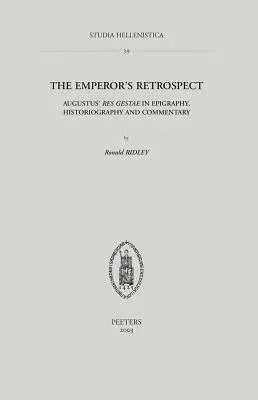The most famous of all Latin inscriptions is the Res Gestae divi Augusti
("the achievements of the late emperor Augustus"), published after his
death at the entrance to his mausoleum in Rome, but known to us from
various copies set up in the eastern provinces. It set out the things he
most wanted to be remembered for from his first bid for power at the age
of 19. The first copies were brought back to Europe in the sixteenth
century, and the text has been a focus of scholarship ever since. This
monograph tells the mostly neglected story of the recovery of the text
over some four centuries, then the way modern scholars have attempted to
understand it. It reveals that assessment has lacked insight to an
alarming degree, and that many misunderstandings have become canonical.
This study attempts to understand the text in its own terms, and test it
against the author's own intentions - about both what is said and what
is not said. The standard list of omissions turns out to be mostly
mistaken, while many real omissions have not been signalled. The
standard list of objections to the author's reliability often turns out
to be highly defensive but defensible statements. The largest chapter,
however, confronts the many cases where Augustus' statements can be
directly challenged, despite the oft-repeated modern claim that he could
not possibly tell a lie, because too many people knew the truth. These
lies have generally been signalled before, but not previously assembled.
The text is finally placed in the context of the Augustan age and its
audience and the Augustan world view.

